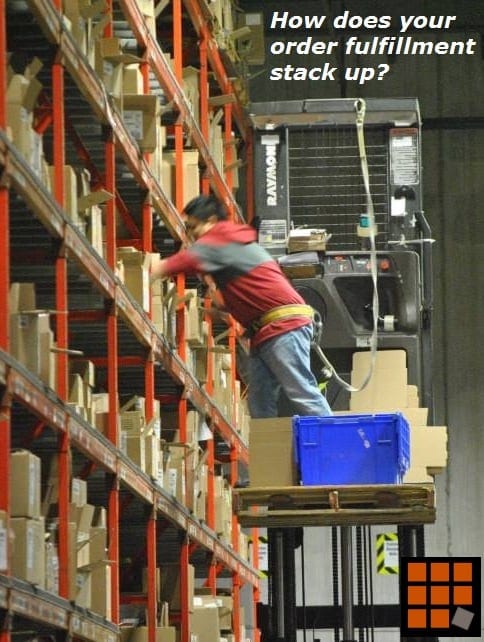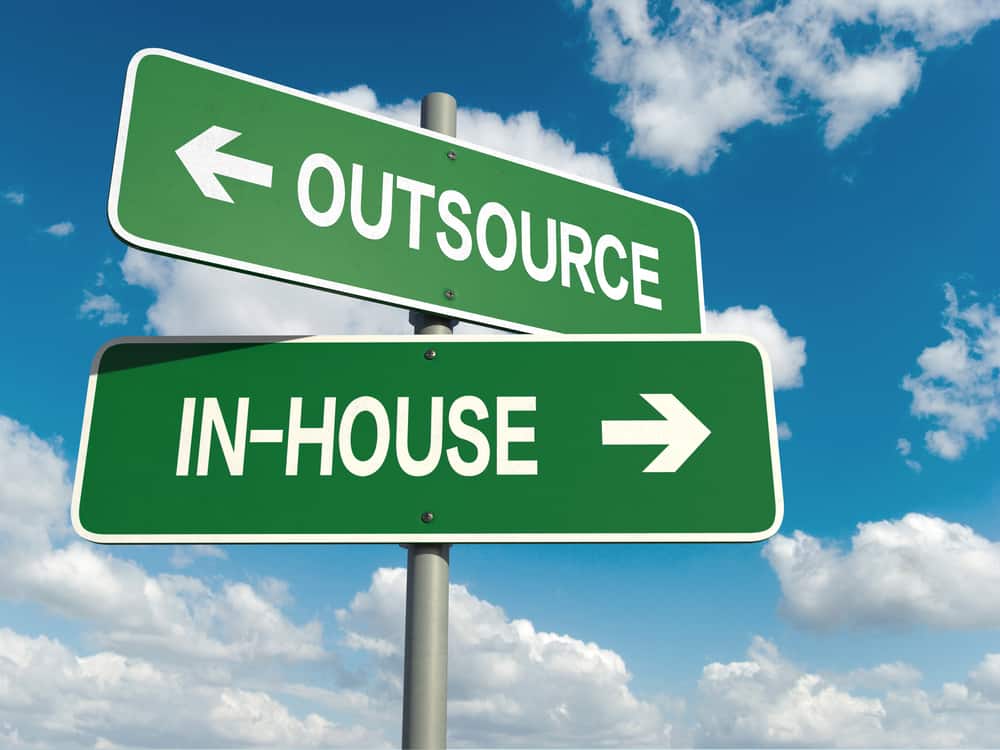Fulfillment Fundamentals: Making Service
Earlier this month we held a webinar to explore the fundamental elements of order fulfillment. Capacity's co-founder and CSO Thom Campbell identified five key areas to focus on if you truly want to develop a fulfillment process that keeps customers coming back to your business time and time again.
For the rest of the month, we'll be unpacking each of these elements in more detail. Today we look at how making service defines your fulfillment process and, eventually, your reputation with customers. You can read the rest of the entries in this compelling series under the tag Fulfillment Fundamentals.

If you've ever picked, packed and shipped an order, it probably seemed pretty straightforward, to the extent that you might think, "what's the big deal?"
That's not something we'd argue with at a certain level, but when you start to consider scaling that same process, things can get complicated, quickly.
In a small business, stock levels can be managed visually in a small storage area. You may have a handful of SKUs (stock keeping units), perhaps into double digits, but you can see when you're running out and your proximity to that stock - and, more importantly, the sales figures - gives you Spiderman-like senses as to when an item is running low.
In this scenario your customers get almost every order correctly and on time because you can handle every element yourself. In other words, at this early stage and scale, you can make service more or less 100% of the time.
At some point, though, you'll need to grow. Perhaps not everyone, but most business owners look to expand sales and increase the size of their operation. This includes order fulfillment, which isn't something that you want to keep doing by hand when order levels start to surge.
So what happens when you hand this off to a third party (and when does it make sense to do so?)

Consider Size, Scale, and Service
In fact, put that last one first, because making service is the most important aspect when it comes to order fulfillment.
How any change will impact service levels (and the associated costs) is a vital consideration and should drive your decision, with the size and scale of your business as key contributing factors that inform it.
Despite our obvious bias towards our industry, it's fair to say that any business with the desire to scale should consider outsourced order fulfillment from day one. That does not mean you should outsource day one, but that a plan to execute fulfillment in the near and medium-term should exist. In short, you need to have an idea of what will happen once you can no longer justify a lot of your time and attention on this part of your business.
Many great products, with proud owners who want to ship direct to consumer, fail to consider the value of the item they are shipping. You may be in for a rude awakening regarding fulfillment costs when you look to outsource and, because many people fail to factor in the true value of their own time, it can be very hard to go from spending a perceived $0 to the newly assumed cost per order fulfilled by a 3PL. A top-selling item can quickly turn into a loss leader in this scenario. Your business can make service but is clearly going to struggle to make a profit.
At the other end of the scale, what if order volume grows tenfold overnight?
This isn't as unrealistic as it sounds to some, given the power of social media to drive sales sharply up with little notice. The day you wake up to 10 times your daily order volume is going to be a rough one if you haven't asked yourself "what will it take to get this stuff out the door and into my customers’ hands reliably?’
As we've talked about in previous articles, the process of selecting a 3PL, developing the right relationship, and getting it up and shipping takes some time. This is when the complexity and dynamic nature of actually making service hits home. The important thing is to have a clear idea of what volumes you can accommodate and when it's time to seek outside, expert assistance.
The enduring lessons, in our experience, have a lot to do with the physics of throughput and expected levels of service.
Every e-commerce customer feels entitled to received an extremely high level of service and who are we, the humble provider, to disabuse our clients of this? But there are significant costs to the fulfillment activity, both to the 3PL, client, and possibly even the end customer. Holiday spikes and other challenges to load-balancing play a very real role in our industry, and need to be clearly discussed from the outset to manage both resources and expectation. The more fulfillment provider and client are on the same page from day one, the more likely we both are to make service that meets and exceeds expectations on a consistent basis.
In summary: you don't have to outsource the second you see a spike in orders, but you do want to plan for those instances and understand the levels at which you'll no longer want to go it alone if they continue.

So You've Decided to Outsource Your Order Fulfillment...
First and foremost, let's set some expectations: outsourcing does not mean immediate or error-free service.
Even professional fulfillment providers experience errors and disruption, as you'd expect in a dynamic industry that involves forecasting, resource allocation, and variable demand and delivery scenarios. In the words of our CSO and co-founder Thom Campbell:
In the words of our CSO and co-founder Thom Campbell:
"If anyone tells you that they offer 100% on-time, accurate order fulfillment, run. You have just met a pathological liar, or someone who does not understand the numbers underlying their own business."
Some of the first questions we're often asked when looking to determine whether we are a fit include:
- How much space do you have?
- How many orders do you ship daily?
- What staffing levels and shifts do you run?
Although these can be interesting to know, the most relevant questions are really "how much available space do you have for me?" and "how many orders of my type can you accommodate daily?" Total values only matter if your business will be the only client, which is unlikely to be the case. Your expectations and service levels should be set based on the resources that will be dedicated to your business, although it certainly can't hurt to know what the upper limits of your chosen fulfillment provider will be.
Beyond that, your provider should be someone you can see becoming a partner in your business, over the long term. They'll need to be there with solutions when your order levels spike, as described above, and you'll need to know that they have the relationships - not to mention the passion for your business - to successfully see you through them without major disruptions to the standards of your brand and customer.
This is where we come to developing order fulfillment which is consistent with your brand, and the second fulfillment fundamental that your business will need to meet. Join us next week for this next installment (or cheat and skip ahead with this full replay of our webinar on YouTube!)